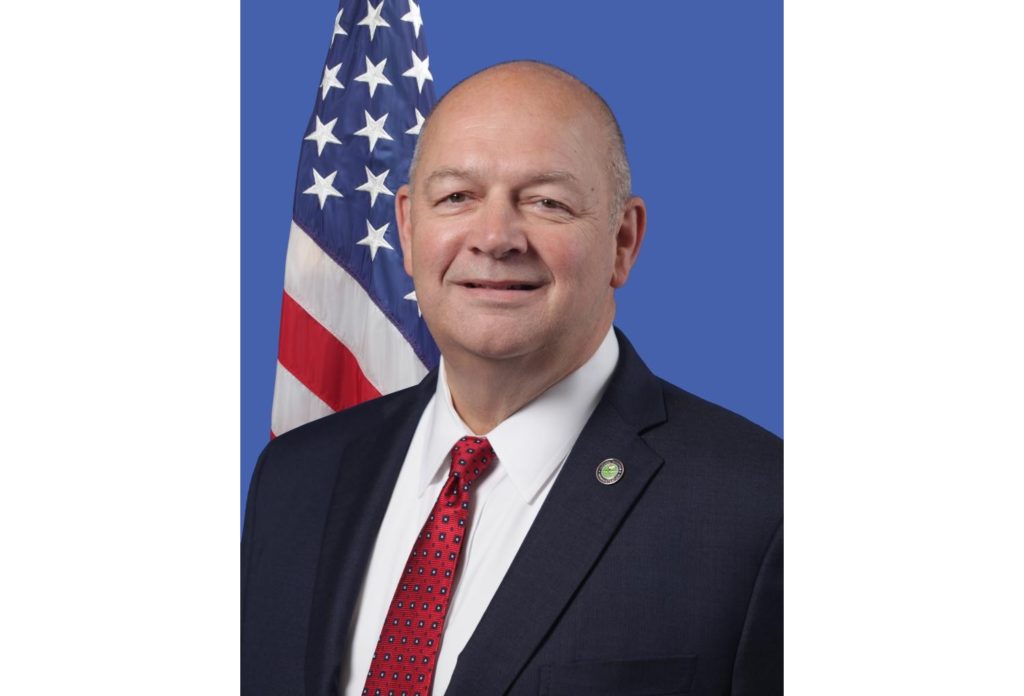Estimated reading time 7 minutes, 45 seconds.
The U.S. Federal Aviation Administration’s (FAA’s) administrator, Steve Dickson, is resigning.
Dickson, who was sworn into the role for a five-year term in August 2019, will officially step down on March 31, 2022 — halfway through his term. Before joining the FAA, he spent nearly three decades at Delta Air Lines, retiring as the senior vice president of flight operations.

Dickson told the FAA’s 45,000 employees in an email that his decision to resign is family-related.
Then, in a letter published by the FAA on Feb. 17, Dickson addressed the workforce and American public, stating: “As I expressed to FAA employees in an email sharing my decision, it’s time for me to go back to Atlanta, where my wife, Janice, and my family have been keeping a light on for me. It started as a porch light, but it’s become a search light, calling me home.”
Reuters on Feb. 17 reported that Dickson was not pressured by the White House to step down. He stated that, in fact, he was asked to stay.
Since Dickson took the helm in 2019 of the agency that oversees U.S. airspace, numerous challenges have presented themselves.
The first, and most obvious, challenge – which is still ongoing – is the Covid-19 pandemic, which caused a devastating blow to commercial air travel and a sharp increase in the number of commercial unruly passengers — namely related to mask mandates. The FAA said 2021 was the worst year on record for unruly passenger incidents.
Dickson implemented the FAA’s “zero-tolerance” policy for disruptive passengers, which took effect in January 2021. Under the policy, legal penalties are the immediate course of action for unruly behavior — there are no warnings or counseling options. The policy is to remain in effect at least until the federal mask mandate is lifted.
Dickson also oversaw the re-certification of the Boeing 737 Max in the U.S., after two fatal crashes — that killed 346 passengers and crew — caused the aircraft to be grounded worldwide in March 2019. After 20 months of working with the plane manufacturer, Boeing, to ensure the aircraft was safe to carry passengers again, the FAA on Nov. 18, 2020, rescinded the order that grounded Max 8 and Max 9 aircraft. Updates to the plane and new training for crew were required before the plane’s return to service.
Prior to this, Dickson piloted a Boeing 737 Max aircraft on a test flight from Boeing Field, Washington, on Sept. 30, 2020. The flight was separate from the FAA’s official re-certification process, but was part of a pledge made by Dickson in November 2019 to ensure the plane is safe. Dickson had insisted that he must be “satisfied that I would put my own family on [the plane] without a second thought.”

More recently, Dickson and the FAA have been faced with challenges surrounding the launch of 5G networks in the U.S., as concerns were voiced by aviation stakeholders regarding potential 5G interference with critical aviation safety equipment — such as radio altimeters, which provide real-time and accurate measurements of an aircraft’s clearance over terrain and obstacles.
The roll out of 5G was pushed from late 2021 to Jan. 19, 2022, to allow more time and space to reduce flight disruptions. The FAA then released a list of 5o airports that will be protected from 5G signals for six months. These airports have been identified as having the greatest impact to the U.S. aviation sector.
Since news broke of Dickson resigning, numerous associations and officials have issued statements, including Transportation Secretary Pete Buttigieg, who expressed his gratitude to Dickson “for his years of service to our country and his lifelong dedication to making sure our aviation system is the best and safest in the world.”
President and CEO of the Association for Unmanned Vehicle Systems International (AUVSI), Brian Wynne, thanked Dickson for his service, and noted that “the drone and Advanced Air Mobility industries represented by AUVSI benefitted from Administrator Dickson’s leadership in advancing steps toward the safe integration of drones in the national airspace, and movement towards enabling AAM operations in the future with new, advanced technologies like vertical takeoff and lift.”
General Aviation Manufacturers Association (GAMA) president and CEO, Pete Bunce, also issued a statement on behalf of the entire GAMA membership, saying Dickson has “been a strong and effective leader, navigating the agency through numerous challenges. . . . His work and commitment to improve the safety, health and strength of the U.S. and global aviation system has advanced the agency’s resiliency and credibility and built a stronger future framework for safety, innovation, sustainability and growth.”
It has not yet been announced who will take the role as head of the FAA once Dickson leaves, but Reuters reported on Feb. 17 that former pilots C. B. “Sully” Sullenberger and Lee Moak were among those mentioned by congressional and industry officials as potential replacements.
All eyes will be on President Joe Biden, who must nominate a new leader for the agency.








